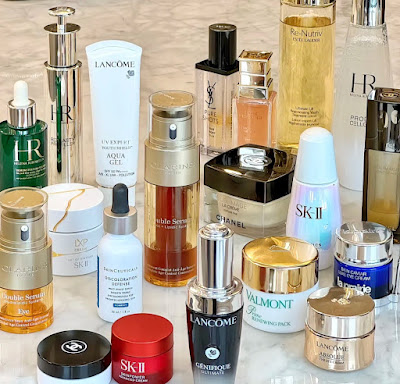Top 10 Cosmetic Powerhouses in 2025: Unveiling the Industry Giants
The global cosmetics industry is a dynamic arena dominated by legacy brands and innovative newcomers. As of 2025, these ten companies stand out not only for their revenue but also for their strategic innovations, sustainability commitments, and ability to adapt to evolving consumer demands. Let’s dive into the titans shaping beauty trends worldwide.
1. L’Oréal Group
Revenue: $44 billion (2024 est.)
Headquarters: France
Key Brands: L’Oréal Paris, Maybelline, Lancôme, Kiehl’s, Garnier
Innovations:
- Pioneered AI-driven virtual try-on tools and personalized skincare via the Perso smart device.
- Committed to 100% renewable energy by 2025 and sustainable ingredient sourcing.
Market Strategy: Dominates both mass-market and luxury segments, leveraging digital marketing and scientific research to stay ahead.
2. Estée Lauder Companies
Revenue: $16 billion (2024 est.)
Headquarters: USA
Key Brands: Estée Lauder, MAC, Clinique, La Mer, Tom Ford Beauty
Innovations:
- Leader in clean beauty, aiming for net-zero emissions by 2030.
- Invested in niche fragrance brands like Melt Season to tap into China’s booming perfume market.
Market Strategy: Focuses on luxury skincare and fragrances, with a stronghold in Asia-Pacific markets.
3. Unilever
Revenue: $63 billion (total, including non-cosmetics)
Headquarters: UK/Netherlands
Key Brands: Dove, Axe, TRESemmé, Vaseline
Innovations:
- Prioritizes sustainability, with plans to halve its environmental footprint by 2030.
- Expanded into premium fragrances through ventures like The 7 Virtues.
Market Strategy: Balances affordability with ethical practices, targeting everyday skincare and haircare needs.
4. Procter & Gamble (P&G)
Revenue: $82 billion (total, including non-cosmetics)
Headquarters: USA
Key Brands: Olay, Pantene, Gillette, SK-II
Innovations:
- Scientific approach to anti-aging formulas, exemplified by Olay’s Regenerist line.
- Relocated supply chains to China to capitalize on Asia’s growth.
Market Strategy: Combines R&D rigor with mass-market accessibility, dominating haircare and grooming.
5. LVMH
Revenue: €82.7 billion (perfume & cosmetics division, 2023)
Headquarters: France
Key Brands: Dior, Guerlain, Fenty Beauty, Fresh
Innovations:
- Dior’s Sauvage perfume remained the world’s best-selling fragrance in 2023.
- Acquired Creed for €2 billion, reinforcing luxury fragrance dominance.
Market Strategy: Merges haute couture with beauty, targeting high-net-worth consumers through exclusivity.
6. Shiseido
Revenue: $8 billion (2024 est.)
Headquarters: Japan
Key Brands: Shiseido, NARS, Clé de Peau Beauté
Innovations:
- Zero-waste goals by 2025 and dermatologist-backed formulations.
- Expanded into China’s lower-tier cities to capture rising middle-class demand.
Market Strategy: Blends Japanese heritage with cutting-edge technology, emphasizing premium skincare.
7. Beiersdorf AG
Revenue: $8.9 billion (2020)
Headquarters: Germany
Key Brands: Nivea, Eucerin, La Prairie
Innovations:
- Nivea’s dermatological research drives products like Labello lip balm and sunscreens.
- Regional labs in Asia and Latin America tailor products to local climates.
Market Strategy: Balances mass-market appeal (Nivea) with luxury (La Prairie).
8. Coty Inc.
Revenue: $6 billion (2024 est.)
Headquarters: USA
Key Brands: CoverGirl, Gucci Beauty, Kylie Cosmetics
Innovations:
- Revitalized legacy brands like Rimmel through Gen Z-focused campaigns.
- Partnered with Kim Kardashian’s SKKN to boost skincare offerings.
Market Strategy: Leverages celebrity collaborations and premium fragrances for growth.
9. Johnson & Johnson (Kenvue)
Revenue: $318 billion (Kenvue’s 2023 skincare & beauty sales)
Headquarters: USA
Key Brands: Neutrogena, Aveeno, Clean & Clear
Innovations:
- Kenvue, spun off in 2023, focuses on science-backed skincare and acne solutions.
- Sustainability initiatives include recyclable packaging.
Market Strategy: Targets health-conscious consumers with dermatologist-recommended products.
10. Kao Corporation
Revenue: $12 billion (total, including non-cosmetics)
Headquarters: Japan
Key Brands: Bioré, Jergens, John Frieda
Innovations:
- Biore’s charcoal cleansers and Jergens’ moisturizers emphasize affordability and efficacy.
- Aims for 30% GHG reduction by 2030.
Market Strategy: Combines Japanese precision with global scalability in skincare and haircare.
Trends Shaping 2025
1. Sustainability: Most giants now prioritize recyclable packaging and carbon neutrality (e.g., L’Oréal, Estée Lauder).
2. Digital Integration: AR try-ons (L’Oréal) and AI shade-matching (Fenty Beauty) redefine shopping.
3. China Focus: Companies like Shiseido and Coty aggressively expand in China, targeting tier-3 cities and perfume markets.
4. Fragrance Boom: Luxury perfumes drive growth for LVMH and Estée Lauder, with China as a key battleground.



Comments
Post a Comment
We'd love to hear your thoughts! Share your beauty tips or tell us what you think about this post.